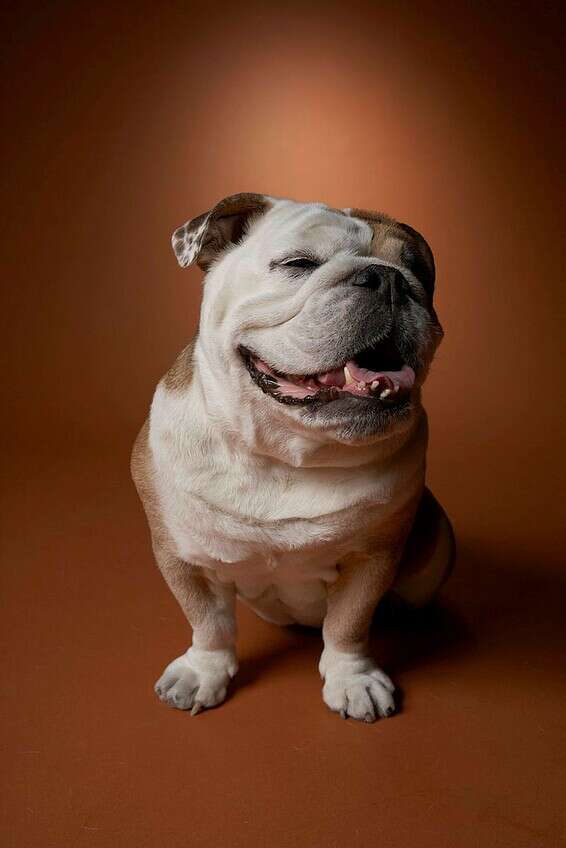Many dogs suffer from dental problems, but they will not see pain even in case of inflammation • The tips that will keep the oral health of our good friends - and prevent them from suffering
"It is recommended to perform dental cleaning once every three years"
Photo:
AP
When it comes to oral hygiene, there is no difference between us and our canine friends - and adhering to daily brushing can significantly improve the quality of life of the wonderful animals that live with us.
Dr. David Rosenblatt, a veterinarian for Bioft, clarifies that 80% of adult dogs suffer from dental problems, and to prevent suffering from our loved ones, he makes us order and lists all the important emphases regarding mouth odor, hygiene and dental cleaning for dogs.
"Each of us brushes our teeth at least twice a day, as part of the day-to-day maintenance of general health. Accordingly, we do not wait until we writhe in toothache to treat them on a daily basis. So why should our beloved dog not receive the same treatment?", Dr. Rosenblatt wonders. "Usually, we remember the dog's oral hygiene only when we ourselves suffer from its bad breath, but it's important to know that dogs suffer from dental and gum problems, just like us, even though they do not show pain even when they suffer from acute inflammation."
What oral problems do dogs suffer from?
"While cavities in teeth are rare in dogs, gingivitis, tooth decay and receding gums are actually common," the veterinarian clarifies.
“These problems can cause loosening of the tooth grip in the jaw to the point of tooth loss, pain, spread to other areas, and even penetration into the bloodstream and damage to the kidneys and heart.
"Sometimes bad breath does not indicate the dog's oral hygiene, but is caused by antibiotic treatment given to it. But in most cases a look in the dog's mouth will reveal redness or swelling suggesting inflammation, or a grayish, brown or yellowish rough tartar caused as a result. From the accumulation of bacterial plaque. "
Dr. Rosenblatt adds: “The differences in eating habits between predators in the wild and predators in the living room have shifted the responsibility for dog oral hygiene from Mother Nature to us.
If you are looking at the mouth of the dog or cat, pay attention to how the upper teeth meet with the lower ones.
Each tooth fits within the space between the teeth opposite.
In this way, whenever the predator bites, a natural cleaning action is performed by the friction between the teeth.
Because the pet does not prey, it makes much less effective and vigorous bites, and in these bites there is no tearing of skin and tendons or crushing of bones.
Thus, over time, a layer of bacteria accumulates, leading to the setting of a stone, and later to gingivitis, receding gums, rot, bad odor, pain and even tooth loss. "
As long as you take care of the dog's oral hygiene, this will ensure that it enjoys a normal flow of blood in the gums and prevents the accumulation of bacterial and tartar plaque, as well as the formation of tooth decay.
"If your pet already suffers from tartar or gingivitis, the process can be stopped by cleaning the stone, by the veterinarian, under general anesthesia," recommends Dr. Ronzblatt. For the accumulation of tartar, depending on its stem, nutrition and routine care of oral hygiene.
"If the dog still does not suffer from stone accumulation, or in case he has just finished teeth cleaning under anesthesia, it is recommended to brush his teeth daily. In a simple operation, lasting about a minute, his quality of life can be significantly improved. It is easier to brush the teeth if you give the dog the habit. "From a young age. Brushing is done by rubbing the outside of the teeth so that you do not even have to open the dog's mouth. Both dogs and cats enjoy the attention, and are usually happy to brush."
But even if you do not have the dog-friendly brush and ointment, there are alternative ways.
According to Dr. Rosenblatt, wet gauze can be wrapped around the finger - and the teeth rubbed. He emphasizes: "Do not use human ointment.
In addition, a wide range of dental products for dogs is now available in pet stores. "

